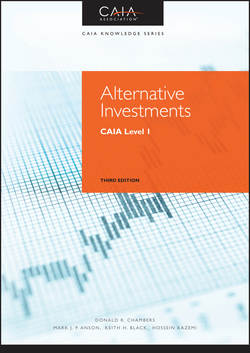Читать книгу Alternative Investments - Hossein Kazemi - Страница 64
На сайте Литреса книга снята с продажи.
PART One
Introduction to Alternative Investments
CHAPTER 4
Statistical Foundations
4.3 Covariance, Correlation, Beta, and Autocorrelation
4.3.2 Correlation Coefficient
ОглавлениеA statistic related to covariance is the correlation coefficient. The correlation coefficient (also called the Pearson correlation coefficient) measures the degree of association between two variables, but unlike the covariance, the correlation coefficient can be easily interpreted. The correlation coefficient takes the covariance and scales its value to be between +1 and −1 by dividing by the product of the standard deviations of the two variables. A correlation coefficient of −1 indicates that the two assets move in the exact opposite direction and in the same proportion, a result known as perfect linear negative correlation. A correlation coefficient of +1 indicates that the two assets move in the exact same direction and in the same proportion, a result known as perfect linear positive correlation. A correlation coefficient of zero indicates that there is no linear association between the returns of the two assets. Values between the two extremes of −1 and +1 indicate different degrees of association. Equation 4.17 provides the formula for the correlation coefficient based on the covariance and the standard deviations:
(4.17)
where ρij (rho) is the notation for the correlation coefficient between the returns of asset i and asset j; σij is the covariance between the returns of asset i and asset j; and σi and σj are the standard deviations of the returns of assets i and j, respectively.
Thus, ρij, the correlation coefficient, scales covariance, σij, through division by the product of the standard deviations, σi σj. The correlation coefficient can therefore be solved by computing covariance and standard deviation as in Exhibit 4.2 and inserting the values into Equation 4.17. The result is shown in Exhibit 4.2.
